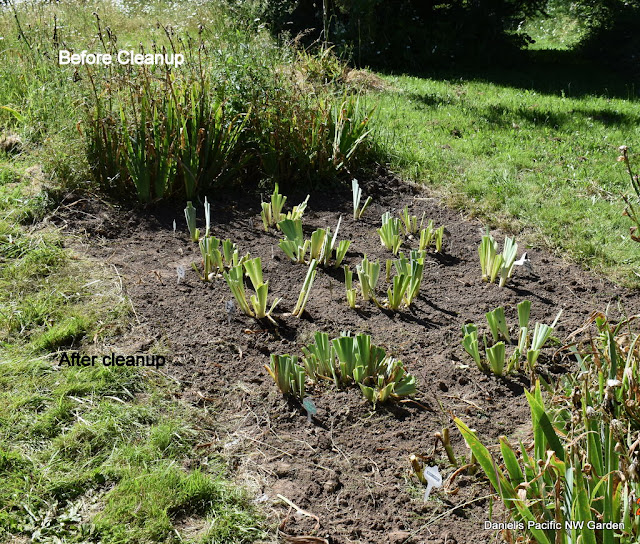I've been cleaning up my bearded iris bed. It's kind of embarrassing how weedy and unkempt it became during the rainy season. There was too much else to do. Now I have a big cleanup to do.
In addition to weeding and cultivating, I'm cutting back the leaves and letting the rhizomes bask in the sun. I have not decided yet about mulch, although in my heart of hearts I know it would help a lot with leaf spot and bacterial rot diseases.
I'm also culling, If I think the flowers are ugly, I'm removing that clump. I'm also removing the ones that seemed highly susceptible to the cool wet season diseases, bacterial rot and leaf spot. The newest reblooming varieties have been the most susceptible, and I culled most of them. I kept a couple of the big lush modern non rebloomers for this time around, even though I think a couple of those are also too susceptible. Next year...
Replacing those, are "rescues" from roadside "Free" rhizomes that I grew in separate nursery beds for a year or two, to see what they look like. Those are nonlabeled, but one looks like Shah Jehan, another like Wabash, and there is a very nice white one and a plicata type with mauve coloration around the edges of the petals. None of those seems particularly disease susceptible, and all are nice. That let me decomission that bed in the easement, which I planted with wildflower mix, grass seed and clover. I also moved into the iris bed, from a nursery bed in what is now the fenced vegetable garden, Monsignor, an apricot colored iris, and a purple one that is very large and nearly black.
 |
| Bearded Iris Bed undergoing cleanup for summer. 6.26.2020. |
 |
| Maraval Chestnut in bloom. 6.26.2020 |
This is one of the chestnut grafts. It's interesting that these grafts are blooming in their first year.
 |
| Graft of Precose Migoule chestnut on Marissard seedling chestnut tree. 6.26.2020 |
These are a nice summer squash. They are very good sliced, coated with little olive oil and seasoned salt, and cooked in the air fryer.















































